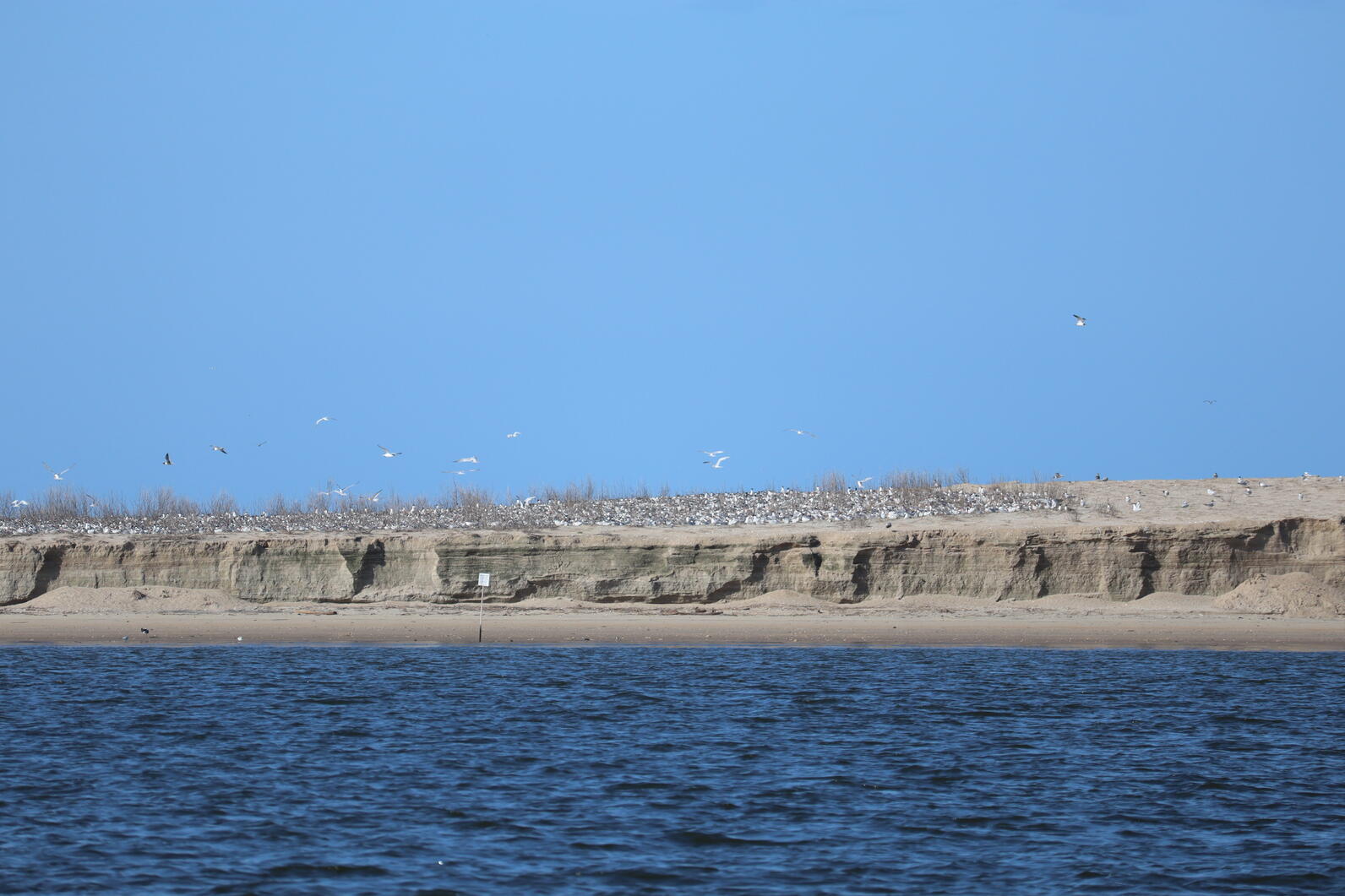Amidst the rapidly changing environment on our coast, the North Carolina Colonial Waterbird Census is one of our most vital tools for keeping tabs on bird population trends. It’s an exhaustive and exhausting job, coordinated by the NC Wildlife Resources Commission and carried out by Audubon and all of the other waterbird management partners across the coast every three years. Here’s an inside look at this year’s census, and the broader questions we’re hoping to answer.
Coastal Biologist Lindsay Addison and her team have been a part of this state-wide effort to count colonial — or group nesting — waterbirds for many years. They visit sites when the most birds are nesting, so they can estimate the total number of pairs there are of each species.
Colonial waterbirds get their name because of how they nest: all in one place, often in large numbers. This survival strategy has upsides and downsides.
More birds mean more defense against predators. But it also makes them more vulnerable. The entire population of, say, Royal Terns nest in just a few locations in North Carolina. If we lose one site, that’s a serious blow for the species. And colonial waterbirds face a number of threats on the coast, from disturbance by humans (and their pets) to traffic from commercial ships that erodes and washes over nesting islands.
Their colonial nature also makes counting these birds both easier and difficult. Biologists can count a lot of birds all at once. But wading into a loud, crowded nesting colony isn’t for the faint of heart.

2023 Count
Addison began this year's count on South Pelican Island in the Cape Fear River, where Royal and Sandwich terns are in peak nesting season by mid-May. Thousands of eggs have been laid and it's her team's job to count them.
"South Pelican Island is attractive to the terns in particular because they like to nest on open bare sand, which we maintain by managing the surrounding vegetation," says Addison. “Only a handful of sites — all of which are dredge islands — host nesting Royal and Sandwich terns annually, which is why we work so hard to protect and monitor them.”
Royal and Sandwich terns usually lay one egg per nest, so in order to know how many breeding pairs there are, researchers have to count each individual egg. With group nesting, however, this can be tricky because terns nest close together on sandy ground. It's hard to know which nests have been tallied and which ones haven't.
With this in mind, Addison and her team walked through the colony in transects, drawing lines in the sand with sticks to mark the areas they counted. They started with Royal Tern eggs first, since they are larger in size and abundance. Then they went back through and counted the smaller Sandwich Tern eggs. The process was repeated in small batches until they worked their way through the colony.

On top of this tedious task, the team also had to brave the extremely loud terns flying around them, who don't like being disturbed from their nests. It's almost like being at a rock concert by the end of it, your ears become numb, and you can't hear yourself speak.
In total they counted about 3,800 Royal Tern and 500 Sandwich Tern pairs on South Pelican Island alone. Addison will enter the data into a colonial waterbird database that will be used by the Wildlife Resources Commission to generate a state-wide report.
"If the report shows a decline," adds Addison "You'd want to investigate why that decline was taking place and try to address whatever factors you thought were affecting them."
Colonial Waterbirds by the Numbers
There are 21 colonial waterbird species in North Carolina that are counted during the census, including pelicans, herons, egrets, gulls, and terns. Nineteen of these are listed as Species of Greatest Conservation Need by the state, meaning they are declining or at risk of extirpation and require management by biologists like Addison to maintain a stable population.
In 2020, 59,111 colonial waterbird nests were counted at over 200 sites across the coast. From the sandy landscape of South Pelican Island, to barrier island beaches and dense tree thickets, these sites provide a variety of habitat types for nesting coastal birds. Most of the species counted were at less than their 14-year average for North Carolina, meaning most species were on the downswing.
The biggest threats to coastal birds — especially during nesting season — are predation, loss of habitat, human disturbance, and flooding that can wash away nests.

The most important thing people can do to help is stay away from posted nesting sanctuaries from March 1st to September 15th to give baby birds enough time to grow and learn how to take care of themselves. Disturbance separates eggs and chicks from their parents, leaving the young vulnerable to a host of threats, from a hungry gull swooping in to overheating in the hot sun.
The state-wide census, and other coordinated counts along the Atlantic coast, are wrapping up in June, when peak nesting season winds down. Once the final numbers are tallied, we'll have a better understanding of how these birds are doing. With increased human development along the coast and potential impacts from climate change, including severe weather and rising seas, it's extremely important to conduct this kind of census.
The data gives managers a look at long-term population trends, how birds are distributing themselves along the coast, and if there are enough suitable habitats for nesting so that biologists like Addison can adapt management decisions to best fit bird's needs.






